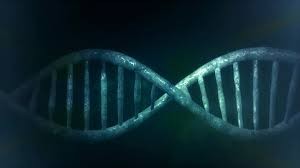Introduction
Prior to recent research, scientists strongly supported the “RNA world” hypothesis, a theory that claims that DNA derived from RNA, and that RNA therefore provided the basis for life as we know it. The evidence of this new study under scientists at The Scripps Research Institute leads to an alternate theory that challenges this previous mode of thinking. This study is intriguing not only because it challenges what has mostly been accepted as factual truth by most scientists, but also because it attempts to solve the question of where and how first life developed.
Background: The “RNA world” hypothesis
The “RNA world” hypothesis dates back to over 30 years ago. Proposed independently by Carl Woese, Francis Crick, and Leslie Orgel, it essentially is a theory that states that RNA existed before modern cells, and stored genetic information and catalyzed chemical reactions within earlier cells. This theory further claims that DNA came later and only then contained the genetic material. It also infers that proteins served as a catalyst much later, only fulfilling this role once RNA evolved. The evidence that supports this theory lies with the chemical differences that distinguish RNA from DNA. RNA can be formed from formaldehyde (HCHO) which is chemically simple, especially in comparison to the much more complicated sugar deoxyribose. In a reaction catalyzed by a specific enzyme, deoxyribose is produced from ribose which also indicates the possibility that DNA comes directly after the structurally more simple and single helix RNA.
Recent Studies
Researchers believe that if this theory is correct, RNA nucleotides and DNA backbones would have mixed to create “heterogeneous” (or a product resulting from differing “parents” with unique charateristics) strands. The resulting “chimeras” (an organism composed of cells from different zygotes leading to subtle variations in form) would be an intermediate step in the transition to RNA if stable, however the study shows a decrease in stability (specifically in thermal stability or the ability to function at high temperatures) when the backbone is shared between the two nucleic acids. The researchers attribute this instability to a slight difference between the sugar in RNA and the sugar in DNA. As a result, if the RNA theory had been true, the chimeras would have died off. This proves that evolution has lead to a system where enzymes have developed to maintain the system of “homogenous” molecules, keeping RNA and DNA separate since they function much better separate from one another. Since these enzymes are fairly “new” in terms of the span of the existence of DNA and RNA, it is highly unlikely that RNA was able to transition to newly developed DNA. Without any mechanisms to keep DNA and RNA separate, it is logical to conclude that RNA does not predicate DNA. This concept is reminiscent of the endosymbiont theory that discusses the possible reason for the unique qualities of mitochondria and chloroplasts in that both theories rely on existing knowledge about these unique structures and how each component might contribute to a different function. Similar to the endosymbiont theory, there is no exact answer as to whether this theory is correct, however through challenging the theory and conducting experiments, we can further develop our understanding of certain biological phenomena.
Conclusion
This alternate theory, on the other hand, proposes a different view that RNA and DNA have coexisted and that one therefore did not develop from the other. While this theory is not completely new, these recent findings regarding instability for a backbone shared between the two nucleic acids provide more evidence for this secondary theory (to the RNA world theory). If this theory is accurate, DNA could have developed its homogenous system much earlier than scientists have predicted up until this point. According to this second theory, after RNA first interacted with DNA it still could have evolved to create DNA. Although scientists will never be able to discover life’s exact origin, these findings can provide insights for biology overall.
https://biologydirect.biomedcentral.com/articles/10.1186/1745-6150-7-23
http://www.sciencemag.org/news/2016/05/rna-world-inches-closer-explaining-origins-life
https://www.sciencedaily.com/releases/2016/09/160928153357.htm
http://www.medicinenet.com/script/main/art.asp?articlekey=8905



Leave a Reply